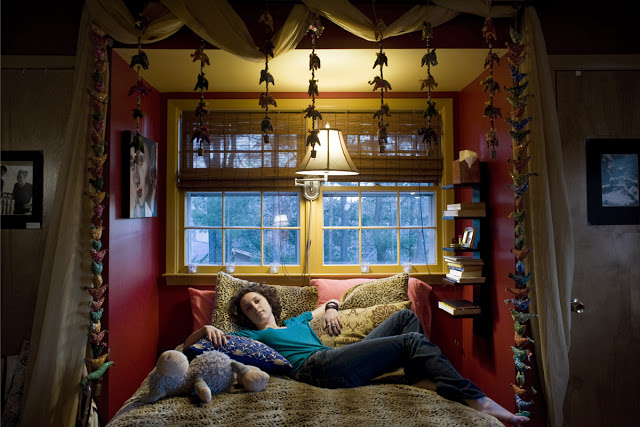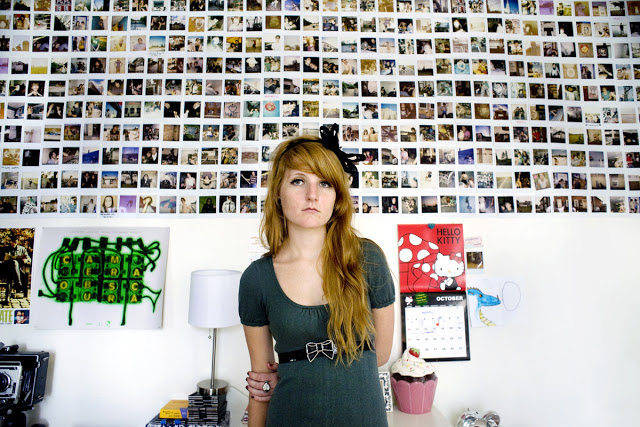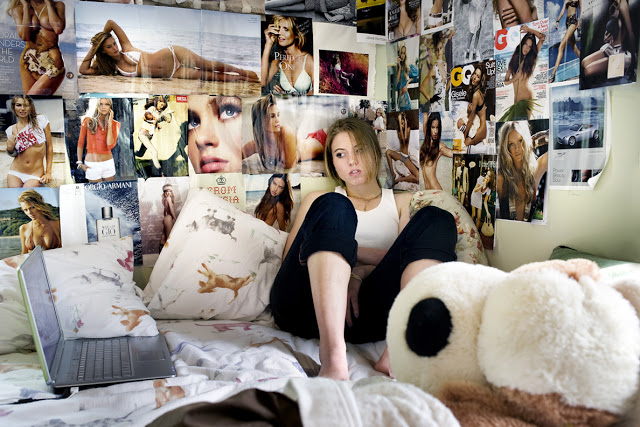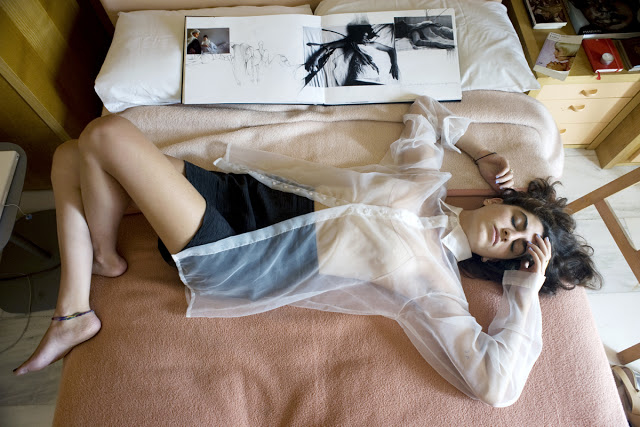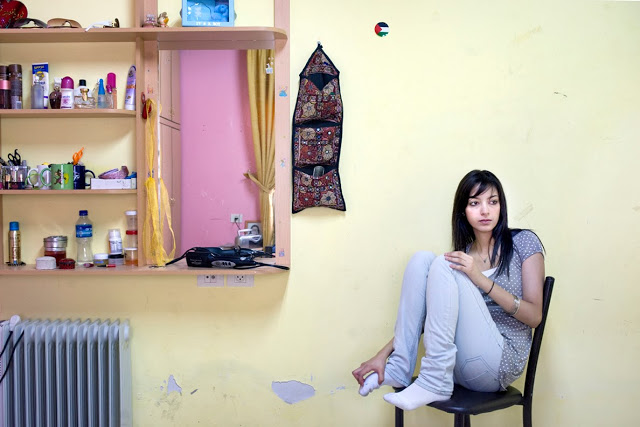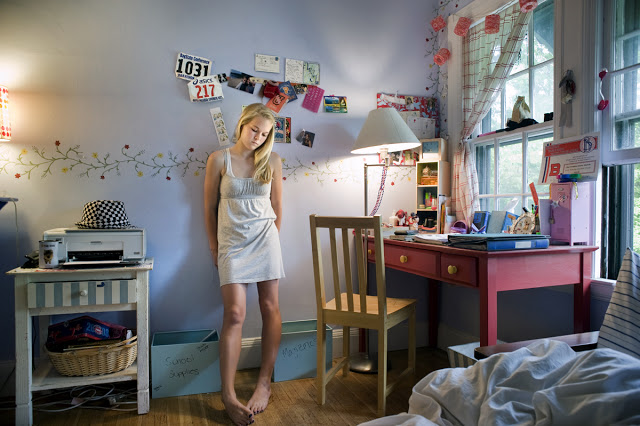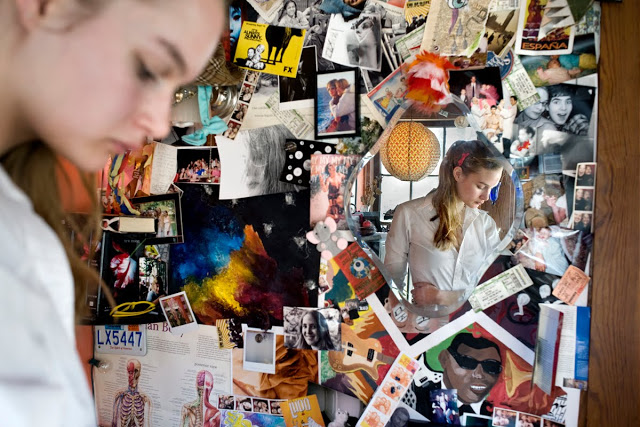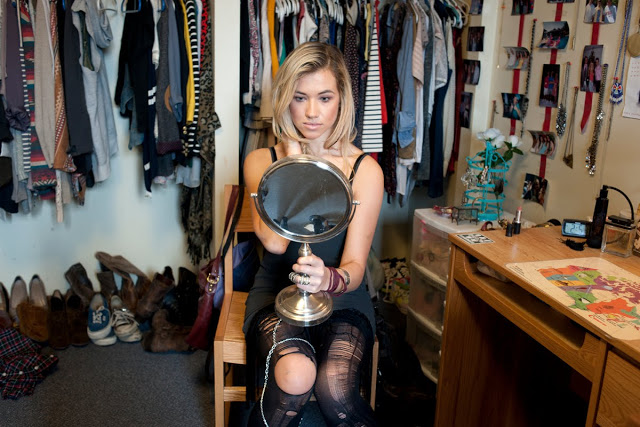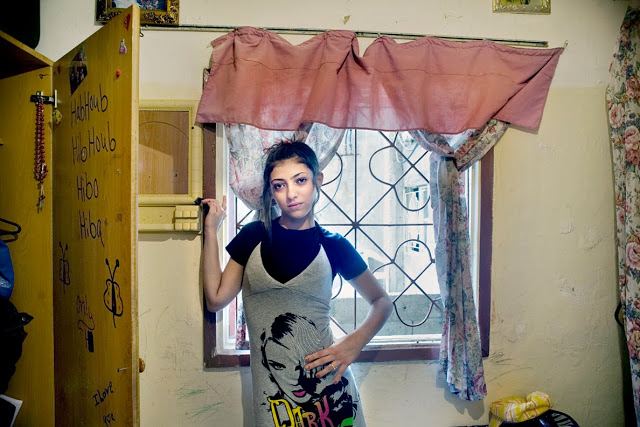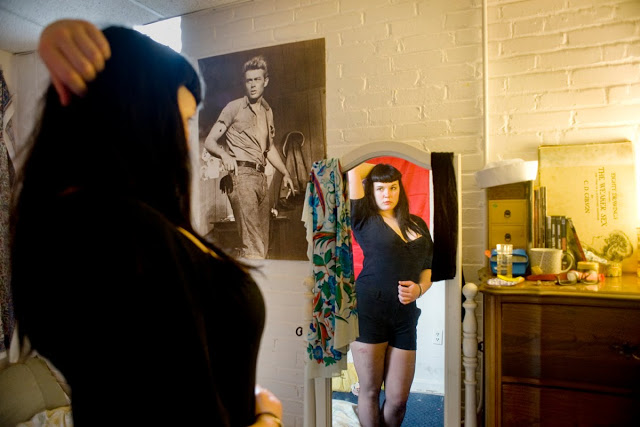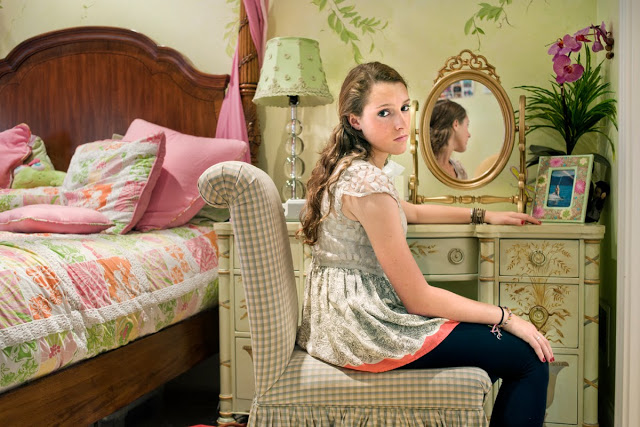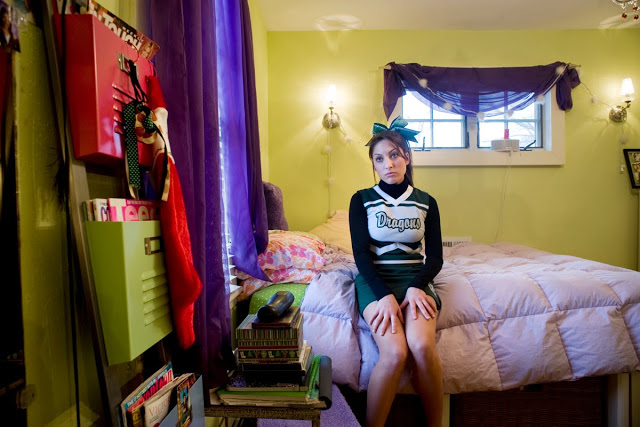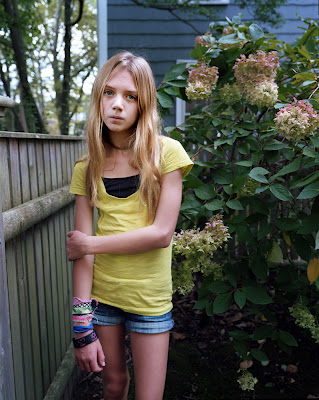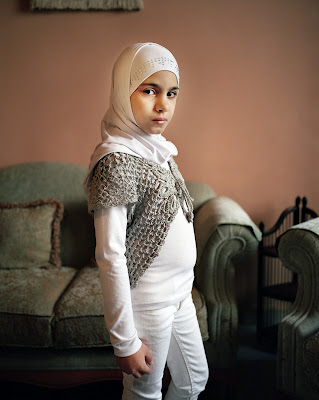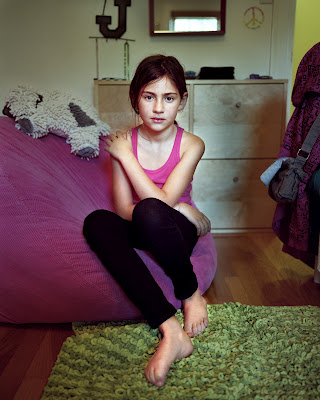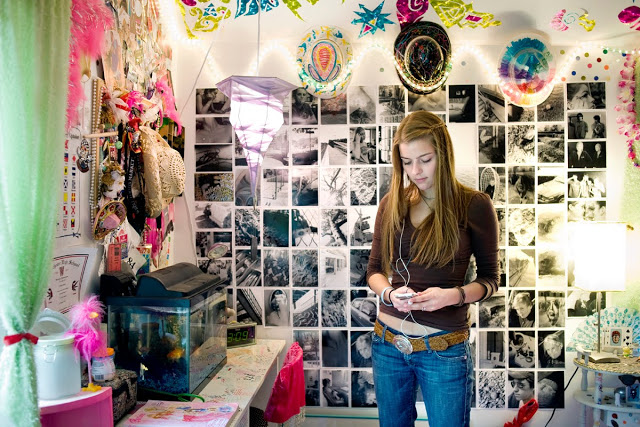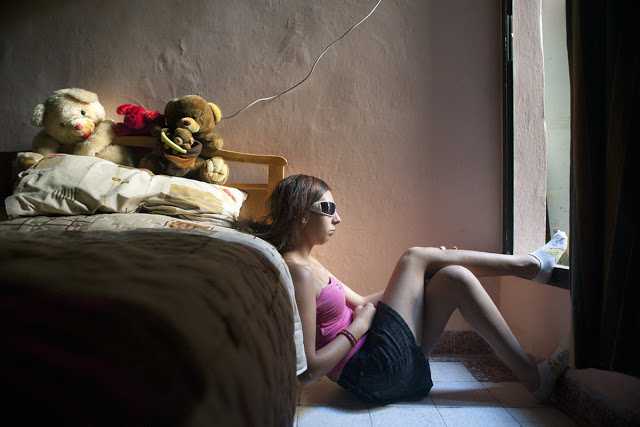Success Stories: Rania Matar
I first met Rania Matar many years ago at a portfolio review. She was was sharing work created in the middle east and I liked her immediately. She was approachable, smart, and real. Since that review, her work has been well celebrated and exhibited. Her resume and website reflect an amazing trajectory that comes from hard work, a rarified eye, and most importantly, an ability to look at the world with curiosity and thoughtfulness. Her new monograph, A Girl and Her Room, has been reviewed and applauded throughout the photo and documentary world, and I’m thrilled for her success.
Rania was born and raised in Lebanon, moving to the United States in the 1980’s. Her work focuses on women and girls both in the Middle East and the US. She has won numerous awards and her images are in the permanent collections of museums worldwide. A Girl and Her Room was a Top 50 Winner at Photolucida’s Critical Mass in 2009 and 2010, won the 2011 Legacy Award at the Griffin Museum of Photography and received a 2011 Massachusetts Cultural Council artist fellowship. A Girl and Her Room is her second book, published by by Umbrage Editions with essays by Anne Tucker and Susan Minot. Matar’s first book Ordinary Lives was published in 2009. She teaches at the Massachusetts College of Art and Design.
In the beginning I asked the girls to chose where they wanted to be photographed. A number of them chose their bedrooms, and it was then I realized that was the nexus of a project. The room was a metaphor, an extension of the girl, but also the girl seemed to be part of the room, to fit in, just like everything else in the material and emotional space.
While I started this work with my daughters and their friends, and with daughters of my friends, I eventually moved away from only photographing girls that I knew well. I enjoyed discovering new girls and building with them a photographer/model relationship with no expectation or holding back from either of us. It allowed me to meet girls from all different backgrounds and different worlds. I always spent time with each girl, so she was comfortable with me and eventually the photography session became a beautiful and intimate collaboration. I was discovering a person on the cusp on becoming an adult, but desperately holding on to the child she barely outgrew, a person on the edge between two worlds, trying to come to terms with this transitional time in her life and adjust to the person she is turning into. Posters of rock stars, political leaders or top models were displayed above a bed covered with stuffed animals; mirrors were an important part of the room, a reflection of the girls’ image to the world; personal objects, photos, clothes everywhere, chaotic jumbles of pink and black make-up and just stuff, seemed to give a sense of security and warmth to the room like a womb within the outside world.
I initially started this work focusing on teenage girls in the United States and eventually expanded the project to include girls from the two worlds I am most familiar with, the two worlds I experienced myself as a young woman: the United States and the Middle East. This is how this project became very personal to me. I became fascinated with the similar issues girls at that age face, regardless of culture, religion and background, as they learn to deal with all the pressures that arise as they become conscious and aware of the surrounding world wherever this may be.
Being with those young women in the privacy of their world gave me a unique peek into their private lives and their inner selves. They sensed that I was not judging them and became an active part of the project. Their frankness and generosity in sharing access was a privilege that they have extended to me but also to all the viewers of this work and this book. The beauty and strength, the aspirations and dreams of these young women from different backgrounds, different worlds, are deeply moving and I have tried to be the invisible mirror of those qualities here.
My deepest hope for this project is that we help them achieve the fullness of their promise.
INTERVIEW WITH RANIA MATAR
The media and photo world has been buzzing about your new book, A Girl and Her Room for months now…I’m so thrilled for you! But let’s start at the beginning. Tell us about finding your way into photography.
I have been a photographer since 2000. I was originally trained and worked as an architect. In college, I took many art classes including painting, drawing, printing but not photography. I always enjoyed photography but did not formally start doing seriously till 2000. I took many workshops starting in 2000 at the New England School of Photography and fell in love with the medium instantly. I loved being in the darkroom and seeing the images come to life. I was originally mainly photographing my children, and doing portraiture, nudes and still lives while still working as an architect. In 2002 I was in Lebanon and went with a cousin of mine to a Palestinian refugee camp. I was shocked to see how people were living so close to where I had grown up and more shocked by the fact that I had no idea. I just started photographing people in the camps, and fell in love with the ability to tell a story through photography, the ability to capture life and to freeze the beauty of those simply mundane moments of life into a permanent image. Everything I had previously done and been somehow felt like it led me to this. I never went back to doing architecture. I felt that my architectural training, my love for art and painting, my being as a woman and a mother, my growing up during the war in Lebanon, my current life in the US and my love the Middle East all combined to make this feel so right. I eventually took more workshops at NESOP and then with the Maine Photographic Workshops in Oaxaca, Mexico with Constantine Manos and Stella Johnson in 2005. Costa became a mentor to me.
Your work has revolved around two worlds—your personal exploration of family and the broader platform of women’s issues, particularly in the Middle East. I imagine that participating in both worlds keeps you rooted. Because of these interests, do you find the connections between daily life and what you witness in other cultures to be more profound? In some ways, this speaks to your idea of being on the edge between two worlds (though with A Girl and Her Room, it’s more about the edge of adolescence and adulthood)….
My being from 2 worlds and simultaneously belonging to 2 cultures definitely has shaped my photography. In my earlier work, I felt that being originally from the Middle East and understanding so well the culture I was able to photograph it with an understanding and an affection that is very personal to me. Living in the United States, I was able to convey my perception of my world over there to my world here, at a time where the news were very focused on a lot of negativity coming from the Middle East.
What I knew was different and I wanted to make sure my audience in the US saw that Middle East I knew and was discovering further through my photography. Photography led me to areas of Lebanon I had never been to before and introduced me to people I would have never met. And I found that regardless of religion and political affiliation, people were just people. They were warm, welcoming, and resilient; they kept their dignity and their humanity despite all they had lived through. They trusted me and opened their doors to me with a humbling hospitality. I wanted to convey that through my work. Now my being a woman and a mother definitely shaped my work as well.
When I started photographing in the camps and in the Southern Lebanon, and I started showing my work here, people always asked me “where are the men in your images?” In the beginning, I was very upset at the fact that I could have ignored such a large part of the population! Then I went back to photograph and realized that I was interested in photographing women and children. I am a woman and a mother myself and my instincts had led me in that direction. I had an “YES” moment, right then: I was photographing women and children in the Middle East. This was what defined my work and made it personal. Once I owned that fact, my work moved very consciously in that direction. It was liberating. And years later, I am still photographing girls and young women.
Were there remarkable differences between the two cultures of girls that you were photographing?
There were more similarities than differences. For me photographing in both cultures wasn’t about comparing cultures, even though some people cannot help but do it. For me it was more about really showing the similarities and the universality of being a teenage girl and the similar issues that girls go through. I initially started this work focusing on teenage girls in the United States and eventually expanded the project to include girls from the two worlds I am most familiar with, the two worlds I experienced myself as a teen and a young twenty-year old: the United States and the Middle East. This is how this project became very personal to me. I became fascinated with the similar issues girls at that age face, regardless of culture, religion, and background, as they learn to deal with all the pressures that arise as they become consciously aware of the surrounding world, wherever this may be. I chose to photograph both in the US and the Middle East because those are the 2 cultures that define my daughters and me.
How did you daughters feel about the project, and how do they and their friends react to seeing themselves and their worlds in print and on the walls?
My daughters had fun with this project, but not while I was photographing them. In that instance I was their mother and not the photographer, and this was not as easy… But they did it anyway – they realized they would not be happy if they were not in the book after all! However they have been pretty involved helping me edit the work. They have their favorite images and by now they refer to most images by the young woman’s name, even if they never met her before. This work was exhibited at my older daughter’s school. I loved that it was also used for educational purposes. In the creative writing class, they would ask the students to each pick a girl and write an essay pretend to be that young woman in the photo and write her story, or in the theater class, each student had to study a young women, her body language, etc. and then act the interpretation of that person on stage. I though those were great exercises and my daughter was happy to be part of this. It validated me in front of my older kids and as a mother, this was huge (I also have a teenage boy).
When you think back to your own teenage bedroom, do you see significant similarities or differences?
I wish someone photographed it for me then so I can tell you what was in it! It was similar in the sense that it was my own space and I decorated it anyway I wanted with stickers and posters. I probably wasn’t as creative as some of those rooms though. I know it was orange, and I did have my huge Teddy Bear and my posters of rock stars (my favorite was Johnny Halliday, a French rock singer….). I had a very loved collection of vinyl records and cassettes and… a very unique collection of shrapnel and bullets (courtesy of the Lebanese civil war)!
What advice can you give emerging photographers, especially on presentation, on networking, on consistently producing excellent work?
Work hard and photograph something you LOVE and are passionate about. Treat the people you photograph with respect. Your passion, commitment to the subject and work that comes from the heart will shine through. Other photographers are your friends. It is important to help each other and give each other feedback. Present your work with the respect it deserves. Look at life around you. You don’t need to go to far away places to take great photographs and make a great project. Once you start looking, you will the beauty in life around you.
What event took your work to the next level?
Probably a collection of events… Portfolio reviews were very helpful to me in terms of introducing me to all sorts of people in the photo world: reviewers and photographers alike. In the beginning I was mainly looking for feedback and those reviews were so helpful to improve my work originally. Eventually I met people who made a difference in my photography career: museum curators, gallery owners, magazine writers, etc, and once again great photographers who became close friends and whose feedback and friendship over the years were very important to me as a person and as a photographer. One event however did make a difference in my life. In 2007, I submitted work to the New England Photographers’ Biennial. I received a first prize, started working with my gallery in Boston and got me nominated for the Foster Prize where I became a finalist and was offered an exhibition at the ICA, Boston. In the same year I received a Massachusetts Cultural Grant. I feel that a combination of hard work, good work and some luck are important.
Are you working on a new project?
I am now working on a new project titled l’Enfant-Femme photographing the younger teen where the focus is now on the girl, her body language and the details, instead of the space around her. It was simultaneously a natural transition from A Girl and Her Room and an inspiration from my younger daughter who at 12 was transforming from a child into a little woman.
And finally, what would be your perfect day?
Any day that goes by, when I can manage to juggle my family life (I have 4 kids) with my work, with the balls still in the air, is a great day.
Devin, Winchester MA 2009
Posts on Lenscratch may not be reproduced without the permission of the Lenscratch staff and the photographer.
Recommended
-
Paccarik Orue: El MuquiDecember 9th, 2025
-
Lauri Gaffin: Moving Still: A Cinematic Life Frame-by-FrameDecember 4th, 2025
-
Dani Tranchesi: Ordinary MiraclesNovember 30th, 2025
-
Art of Documentary Photography: Elliot RossOctober 30th, 2025
-
The Art of Documentary Photography: Carol GuzyOctober 29th, 2025



